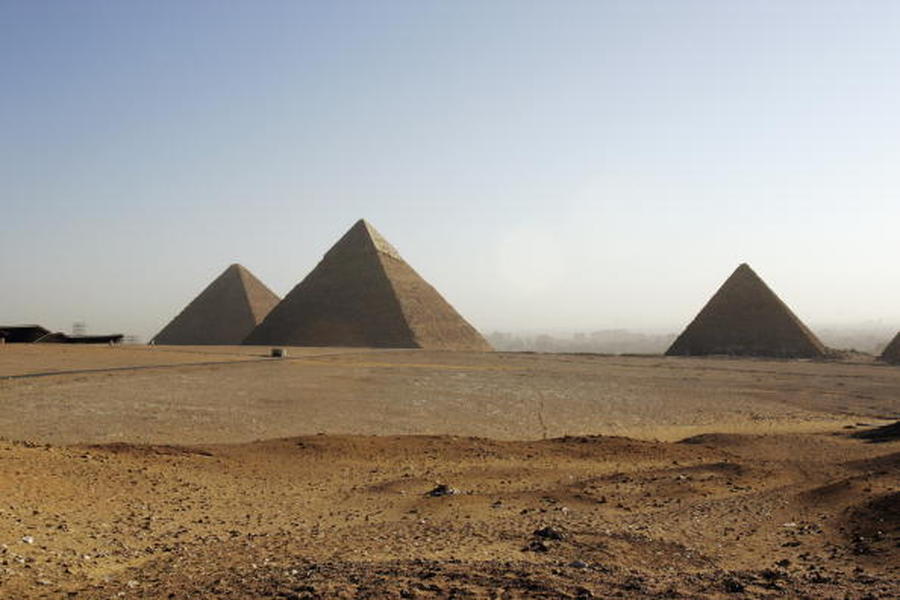Man discovers passage to Egypt's Great Pyramid — under his house


Sometimes, breaking the law has its perks.
An Egyptian citizen, identified as "Nagy" by Arabic news site Ahram.org, was illegally digging in his backyard when he found a tunnel leading to the Pyramid of Khufu. The pyramid, nicknamed the Great Pyramid, is the oldest and largest of the three Giza Pyramids.
Nagy, a resident of the El Haraneya village, near the Giza Plateau, dug 33 feet beneath his house before he found the corridor, made from stone blocks. Egypt's Ministry of Antiquities sent archaeologists to the scene, and a committee confirmed the passage to be the pyramid's legendary causeway.
The Week
Escape your echo chamber. Get the facts behind the news, plus analysis from multiple perspectives.

Sign up for The Week's Free Newsletters
From our morning news briefing to a weekly Good News Newsletter, get the best of The Week delivered directly to your inbox.
From our morning news briefing to a weekly Good News Newsletter, get the best of The Week delivered directly to your inbox.
Archaeologists have searched for decades for the passage to the pyramid. The causeway is mentioned in the Histories by the Greek Herodotus, who claims to have visited it in the fifth century B.C.E. Herodotus wrote that the passage was enclosed and covered in reliefs, but before Nagy's excavation, only small remnants of the causeway had been found.
The Khufu pyramid complex is known to have connected to an undiscovered temple near the Nile River. Thanks to the new discovery, archaeologists believe the temple may be buried beneath the village of Nazlet el-Samman.
A free daily email with the biggest news stories of the day – and the best features from TheWeek.com
Meghan DeMaria is a staff writer at TheWeek.com. She has previously worked for USA Today and Marie Claire.
-
 Alaa Abd el-Fattah: should Egyptian dissident be stripped of UK citizenship?
Alaa Abd el-Fattah: should Egyptian dissident be stripped of UK citizenship?Today's Big Question Resurfaced social media posts appear to show the democracy activist calling for the killing of Zionists and police
-
 Biggest political break-ups and make-ups of 2025
Biggest political break-ups and make-ups of 2025The Explainer From Trump and Musk to the UK and the EU, Christmas wouldn’t be Christmas without a round-up of the year’s relationship drama
-
 Why 2025 was a pivotal year for AI
Why 2025 was a pivotal year for AITalking Point The ‘hype’ and ‘hopes’ around artificial intelligence are ‘like nothing the world has seen before’
-
 Nobody seems surprised Wagner's Prigozhin died under suspicious circumstances
Nobody seems surprised Wagner's Prigozhin died under suspicious circumstancesSpeed Read
-
 Western mountain climbers allegedly left Pakistani porter to die on K2
Western mountain climbers allegedly left Pakistani porter to die on K2Speed Read
-
 'Circular saw blades' divide controversial Rio Grande buoys installed by Texas governor
'Circular saw blades' divide controversial Rio Grande buoys installed by Texas governorSpeed Read
-
 Los Angeles city workers stage 1-day walkout over labor conditions
Los Angeles city workers stage 1-day walkout over labor conditionsSpeed Read
-
 Mega Millions jackpot climbs to an estimated $1.55 billion
Mega Millions jackpot climbs to an estimated $1.55 billionSpeed Read
-
 Bangladesh dealing with worst dengue fever outbreak on record
Bangladesh dealing with worst dengue fever outbreak on recordSpeed Read
-
 Glacial outburst flooding in Juneau destroys homes
Glacial outburst flooding in Juneau destroys homesSpeed Read
-
 Scotland seeking 'monster hunters' to search for fabled Loch Ness creature
Scotland seeking 'monster hunters' to search for fabled Loch Ness creatureSpeed Read
